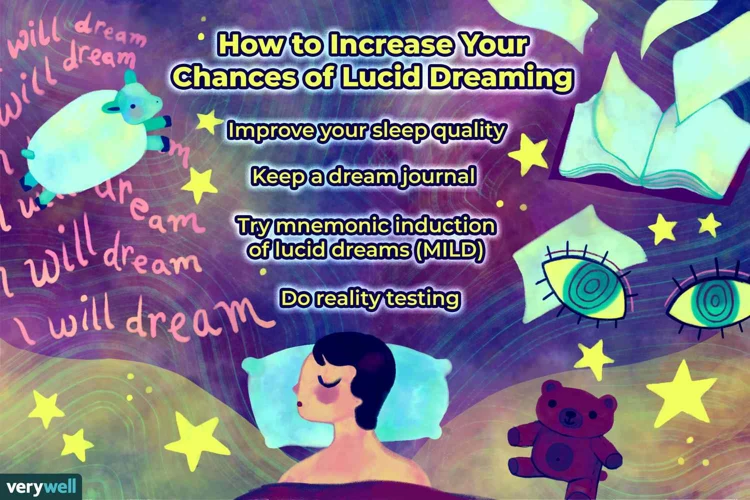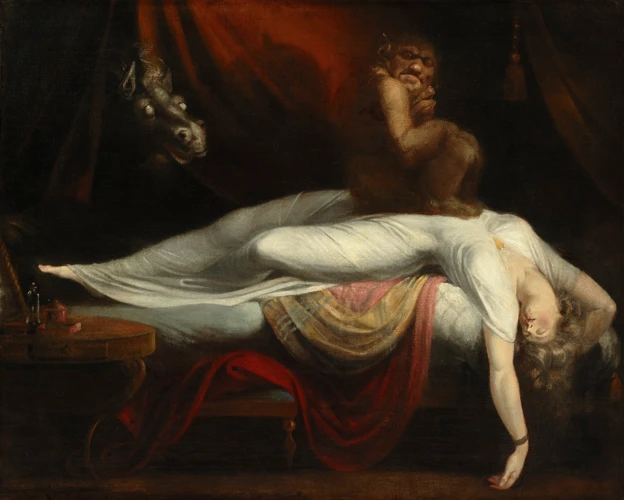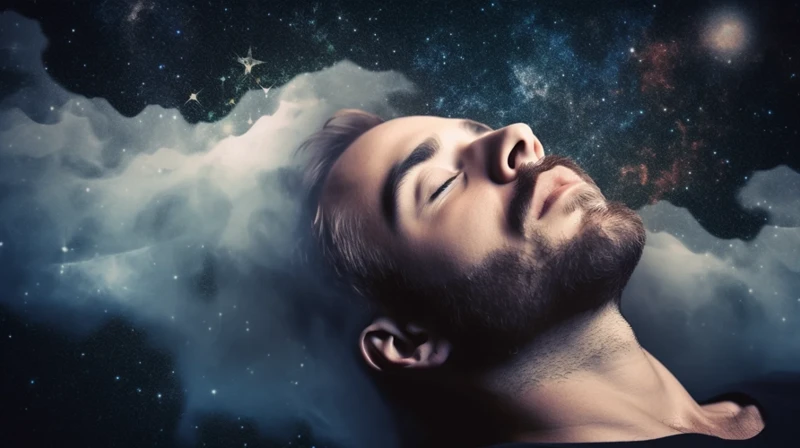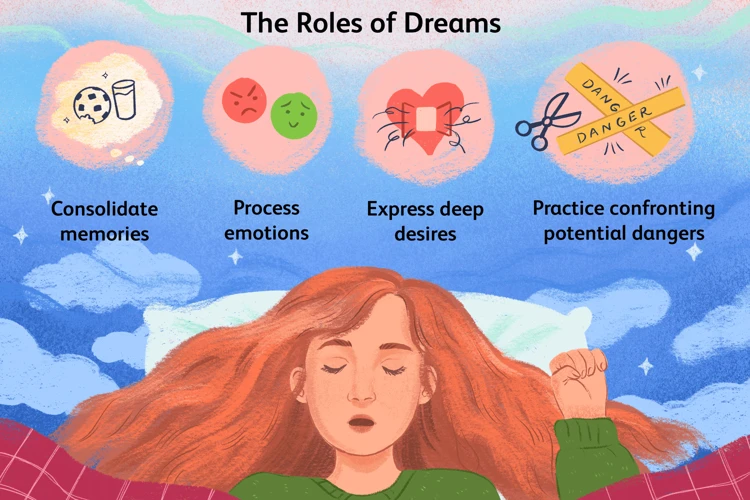Have you ever found yourself in a state where you are aware that you’re dreaming and can control your dreams? Or perhaps you’ve experienced the sensation of being paralyzed while waking up or falling asleep, unable to move your body? These two fascinating phenomena, known as lucid dreaming and sleep paralysis, have captured the curiosity of many. In this article, we will delve into the connection between lucid dreaming and sleep paralysis and explore the scientific explanations, personal experiences, and potential benefits of these intriguing states of consciousness.
What is Lucid Dreaming?

Lucid dreaming is a state of consciousness where a person becomes aware that they are dreaming while they are still in the midst of a dream. In this heightened state of awareness, the dreamer realizes that they have the ability to control and manipulate their dreams, essentially becoming an active participant within the dream world. This phenomenon allows individuals to have vivid and immersive experiences that can be indistinguishable from reality. Lucid dreams can vary in intensity and clarity, with some individuals having brief moments of lucidity, while others can maintain a lucid state for an extended period of time.
There are various methods and techniques that individuals use to induce lucid dreaming, such as reality checks, dream journaling, and meditation. These practices help train the mind to recognize the dream state and increase the likelihood of becoming lucid during sleep. Lucid dreaming has long been associated with a range of benefits for personal growth and self-discovery, as well as tapping into the power of the subconscious mind. It has also been explored as a means of finding relief from nightmares through specialized techniques.
What is Sleep Paralysis?

Sleep paralysis is a temporary condition in which a person is unable to move or speak while transitioning between sleep and wakefulness. It is often accompanied by a sense of pressure on the chest and a feeling of being immobilized, leading to a sense of fear and panic. Sleep paralysis typically occurs during two distinct phases of sleep: when falling asleep (hypnagogic or predormital sleep paralysis) or when waking up (hypnopompic or postdormital sleep paralysis).
During sleep paralysis, the brain remains in a state of REM (rapid eye movement) sleep, even though the person is partially awake. In REM sleep, the body experiences temporary paralysis to prevent us from physically acting out our dreams. However, during sleep paralysis, this paralysis persists as the mind becomes conscious, resulting in the sensation of being unable to move. While sleep paralysis can be a distressing experience, it is generally harmless and typically lasts for a few seconds to a few minutes.
In some cases, sleep paralysis can be accompanied by vivid hallucinations and eerie sensations. These hallucinations can range from a sense of an unseen presence in the room to vivid and sometimes frightening imagery. It is important to note that sleep paralysis is a relatively common phenomenon and is not typically indicative of an underlying medical condition. Techniques such as lucid dreaming and other coping strategies can help individuals overcome the fear and discomfort associated with sleep paralysis.
The Intersection of Lucid Dreaming and Sleep Paralysis

The intersection of lucid dreaming and sleep paralysis is a fascinating area that has intrigued researchers and individuals alike. While both phenomena occur during sleep, they represent two distinct experiences that can sometimes coexist. One possible connection between the two states is their occurrence during the rapid eye movement (REM) stage of sleep. During REM sleep, the brain is highly active and dreams occur. In lucid dreaming, individuals become aware that they are dreaming and can actively engage with their dreams. Sleep paralysis, on the other hand, involves a temporary inability to move or speak while falling asleep or waking up. It is believed that sleep paralysis arises from the continuation of muscle atonia, which is a natural mechanism to prevent physical movements during dreaming. This overlap in the underlying neurological processes suggests that there may be a link between the two states. Individuals who experience sleep paralysis may be more likely to transition into a lucid dream state due to their heightened awareness. The shared sensations of being in the dream realm while being consciously aware or physically immobilized contribute to the entwining of these two intriguing phenomena.
1. Similar Neurological States
One intriguing aspect of the connection between lucid dreaming and sleep paralysis is the similarity in neurological states that occur during these experiences. Both lucid dreaming and sleep paralysis are associated with rapid eye movement (REM) sleep, a stage of sleep characterized by vivid dreams and increased brain activity.
During REM sleep, the brain becomes highly active, while the body experiences a state of muscle atonia, or temporary paralysis, to prevent individuals from physically acting out their dreams. In the case of lucid dreaming, the brain regions responsible for self-awareness, such as the prefrontal cortex, seem to become more active, enabling individuals to realize that they are dreaming and exert control over their dream scenarios.
Similarly, during sleep paralysis, individuals may awaken partially from REM sleep, resulting in a state where the mind becomes conscious while the body remains in a state of paralysis. This can lead to intense hallucinations and a feeling of being trapped in a dreamlike state, unable to physically move.
Research using neuroimaging techniques, such as functional magnetic resonance imaging (fMRI), has shown overlapping brain activation patterns between lucid dreaming and sleep paralysis, further suggesting a link between these states. By understanding these shared neurological processes, researchers are gaining insights into the mechanisms behind these phenomena.
2. Shared Sensations
- Paralysis: Both lucid dreaming and sleep paralysis involve a sense of bodily paralysis. During sleep paralysis, individuals experience a temporary inability to move their muscles, which can be accompanied by a feeling of pressure or heaviness on the chest. Similarly, in lucid dreaming, individuals may also experience a sensation of paralysis before gaining control over their dream actions.
- Hallucinations: Another shared sensation in both lucid dreaming and sleep paralysis is the occurrence of hallucinations. In sleep paralysis, individuals may experience vivid and often frightening hallucinations, such as seeing shadowy figures or hearing strange noises. Similarly, during lucid dreaming, individuals can experience vivid sensory perceptions and interact with imagined objects or characters.
- Awareness of the Gap: Both states involve a heightened sense of awareness of the gap between wakefulness and dreaming. In sleep paralysis, individuals are consciously aware of their physical surroundings but unable to move or wake up fully. In lucid dreaming, individuals are aware that they are dreaming even while their physical body remains asleep. This awareness allows individuals to consciously navigate and influence the dream environment.
3. Overcoming Fear through Lucid Dreaming
Fear is a universal human experience, and it can manifest in various forms, including during sleep in the form of nightmares or sleep paralysis. However, overcoming fear through lucid dreaming offers a unique and empowering opportunity to confront and conquer these fears head-on.
When an individual becomes lucid within a dream, they can actively engage with the dream environment and its contents. This heightened awareness provides an opportunity to not only change the dream narrative but also to face and overcome frightening situations or recurring nightmares. By utilizing their lucidity, individuals can employ techniques like visualization, positive affirmations, and confronting their fears directly, effectively transforming the dream into a space for personal growth and empowerment.
This approach has been particularly useful for individuals suffering from recurring nightmares or those affected by sleep paralysis. By recognizing that they are dreaming during a nightmare and harnessing their lucidity, individuals can take control of the dream and reshape the outcome, ultimately decreasing fear and anxiety associated with sleep.
Through the practice of lucid dreaming, individuals can develop a sense of self-efficacy, knowing that they have the ability to confront and overcome their fears within the realm of dreams. This newfound confidence can extend beyond dream experiences and positively impact the individual’s waking life, contributing to a greater sense of resilience and well-being.
Scientific Explanations

Scientific explanations have been proposed to shed light on the connection between lucid dreaming and sleep paralysis. One prominent explanation is the role of REM sleep and muscle atonia. During REM (rapid eye movement) sleep, the brain undergoes intense activity, and the body experiences muscle atonia, a temporary paralysis that prevents us from acting out our dreams. It is believed that in cases of sleep paralysis, individuals may partially wake up while this muscle paralysis is still in effect, causing a feeling of being unable to move. This paralysis may also lead to heightened awareness and the potential for lucid dreaming.
Another neurochemical factor that contributes to the connection between lucid dreaming and sleep paralysis is the involvement of neurotransmitters such as serotonin and dopamine. These neurotransmitters play a role in regulating the sleep-wake cycle and are thought to influence both the occurrence of lucid dreams and the experiences of sleep paralysis. Further research is still needed to fully understand the complex mechanisms behind these phenomena and their interplay within the brain.
1. REM Sleep and Muscle Atonia
Understanding the connection between lucid dreaming and sleep paralysis requires knowledge about the underlying neurological processes that occur during sleep. Rapid Eye Movement (REM) sleep is a stage of sleep where most dreaming occurs. During REM sleep, the brain experiences increased activity, similar to being awake, while the body remains in a state of muscle atonia, or muscle paralysis.
This muscle atonia is necessary to prevent individuals from acting out their dreams and potentially causing harm to themselves or others. It is believed that the temporary inhibition of muscle movement during REM sleep is controlled by the brainstem, specifically the pontine tegmentum, which releases a neurotransmitter called gamma-aminobutyric acid (GABA).
Both lucid dreaming and sleep paralysis occur during the REM sleep stage. However, in the case of lucid dreaming, the individual’s awareness is heightened, allowing them to consciously navigate and control their dreams. On the other hand, during sleep paralysis, the individual wakes up or falls asleep while still in REM sleep, leading to a temporary inability to move or speak, despite full awareness of one’s surroundings.
While muscle atonia is a normal part of REM sleep, it is thought that sleep paralysis may occur when the transition between sleep stages is disrupted or when a person unexpectedly becomes conscious during REM sleep. The experience of sleep paralysis can be quite distressing, as individuals may also report hallucinations and a sense of pressure or a heavy weight on their chest.
2. Neurochemical Factors
- Neurotransmitters: Neurochemical factors play a significant role in the occurrence of both lucid dreaming and sleep paralysis. One key neurotransmitter involved is acetylcholine. During REM sleep, the brain releases high levels of acetylcholine, which are associated with increased brain activity and vivid dreaming. It is believed that an imbalance in acetylcholine levels may contribute to the experience of both lucid dreaming and sleep paralysis.
- GABA: Another neurotransmitter involved in these phenomena is gamma-aminobutyric acid (GABA). GABA acts as an inhibitory neurotransmitter, regulating neuronal excitability. During sleep paralysis, GABAergic inhibition may be heightened, leading to the temporary paralysis experienced during the transition in and out of REM sleep. Conversely, during lucid dreaming, a delicate balance of GABA and acetylcholine is believed to allow for increased self-awareness and volitional control within the dream state.
- Serotonin: Serotonin, often referred to as the “mood-regulating neurotransmitter,” also plays a role in the occurrence of lucid dreaming and sleep paralysis. Low serotonin levels have been linked to an increased likelihood of experiencing sleep paralysis, while higher serotonin levels may promote more stable sleep patterns. The complex interplay between various neurotransmitters and their fluctuating levels during sleep may help explain the co-occurrence of lucid dreams and sleep paralysis.
Experiences and Testimonials

Individual experiences and testimonials play a crucial role in understanding the connection between lucid dreaming and sleep paralysis. Many people have reported instances of lucid dreaming while experiencing sleep paralysis, where they become aware of the dream state while being unable to move their physical bodies. These experiences can range from fascinating and exhilarating to frightening and unsettling. Some individuals have even developed techniques to induce lucid dreaming during sleep paralysis, using the paralytic state as a doorway into the lucid dream realm. These techniques often involve maintaining a calm and focused mindset, coupled with visualization and intention-setting. These firsthand accounts provide valuable insights into the realms of consciousness that exist beyond our waking reality.
1. Lucid Dreaming while Experiencing Sleep Paralysis
- Lucid Dreaming while Experiencing Sleep Paralysis: It is not uncommon for individuals to experience lucid dreaming while also encountering episodes of sleep paralysis. Sleep paralysis is a phenomenon characterized by a temporary inability to move or speak while falling asleep or waking up. During sleep paralysis, individuals may also experience hallucinations and a sense of pressure or weight on their chest. However, instead of feeling fear or helplessness during these episodes, some individuals have reported being able to enter a state of lucid dreaming.
- The combination of lucid dreaming and sleep paralysis can be an intense and surreal experience. Those who have experienced it describe a unique sensation of floating between dimensions, where they are conscious both of their physical body’s inability to move and the dream world they find themselves in. In this state, individuals have reported being able to navigate their dreams consciously and exert control over their dream environment.
- While the exact mechanisms behind why some individuals are able to have lucid dreams during sleep paralysis are still not fully understood, it is believed to be related to the overlap of brain activity between the two states. Both lucid dreaming and sleep paralysis occur during the rapid eye movement (REM) sleep stage, where the brain is highly active, but the body is typically in a state of muscle atonia or paralysis to prevent acting out dreams.
- For those who are able to harness the connection between lucid dreaming and sleep paralysis, it can be a fascinating and transformative experience. Some individuals use this unique state of consciousness as an opportunity for introspection, exploration, and creative inspiration. However, it is important to note that not all individuals who experience sleep paralysis also have lucid dreams, and the presence of lucidity during sleep paralysis can vary from person to person.
2. Techniques to Induce Lucid Dreaming during Sleep Paralysis
While sleep paralysis can be a frightening experience, it is possible to transition from this state into a lucid dream. Here are a few techniques that individuals have found helpful:
- Maintain Calmness: When experiencing sleep paralysis, it is important to stay calm and remind yourself that it is just a temporary state. Fear and panic can intensify the sensations and make it more challenging to transition into a lucid dream. Practice deep breathing and soothing self-talk to stay relaxed.
- Visualization Exercises: Use the power of visualization to create a vivid and desirable dream scenario. Imagine yourself in a peaceful and enjoyable dream environment. Visualize the sensations, sounds, and visuals of the dream to enhance the transition into lucidity.
- Mental Affirmations: Repeat positive affirmations to yourself, such as “I am in control of my dreams” or “I am aware and lucid.” By reinforcing these beliefs in your mind, you can increase the likelihood of achieving lucidity during the sleep paralysis episode.
- Reality Checks: Perform reality checks during sleep paralysis to confirm that you are in a dream state. This can include trying to float or fly, checking if you can pass through objects, or trying to change your surroundings mentally. These reality checks can help trigger lucidity and allow you to take control of the dream.
- Wake-Induced Lucid Dreaming (WILD): WILD involves maintaining awareness as your body falls asleep. During sleep paralysis, focus your attention on a specific image or scene from your imagination, allowing it to become more vivid. Gradually immerse yourself in this imagined world, and with practice, you may find yourself entering a lucid dream state.
It’s important to note that each individual may respond differently to these techniques, and it may take time and practice to successfully induce lucid dreaming from sleep paralysis. Additionally, it’s crucial to prioritize your safety and well-being during these experiences. If you find sleep paralysis or lucid dreaming overwhelming or distressing, it is recommended to consult with a healthcare professional or sleep specialist for guidance and support.
Benefits and Applications

Lucid dreaming offers a wide range of benefits and applications that extend beyond simple entertainment. Firstly, it can be a powerful tool for personal growth and self-discovery. Through lucid dreaming, individuals have the opportunity to explore their subconscious mind, confront fears and anxieties, and gain deeper insights into their own psyche. Additionally, lucid dreaming has been known to ignite creativity and provide inspiration for various artists, writers, and creators. By tapping into the limitless possibilities of the dream world, individuals can unlock new ideas, perspectives, and artistic visions. Lastly, lucid dreaming has shown potential therapeutic benefits, including aiding in the treatment of recurring nightmares and providing a sense of control over dreams. This can help individuals confront and overcome traumatic experiences and phobias. Lucid dreaming opens up a realm of possibilities for personal growth, creativity, and emotional healing.
1. Personal Growth and Self-Discovery
When it comes to personal growth and self-discovery, lucid dreaming holds immense potential. Within the lucid dream state, individuals have the opportunity to explore their inner consciousness and gain insights into their fears, desires, and unresolved emotions. By actively engaging in lucid dreams, people can confront and overcome their fears, boosting their confidence and sense of empowerment in the waking world. Lucid dreaming also allows individuals to explore different aspects of their identity and experiment with new perspectives and behaviors.
Lucid dreaming can serve as a platform for problem-solving and creative thinking. People often report coming up with innovative ideas, artistic inspirations, and solutions to real-life challenges while in the lucid dream state. This is because the dreaming mind is free from constraints and can bypass logical limitations, allowing for novel connections and out-of-the-box thinking. Individuals can use lucid dreaming to practice certain skills or enhance their performance in areas such as sports, public speaking, or artistic endeavors.
Lucid dreaming offers a rich playground for personal growth and self-discovery, enabling individuals to tap into their subconscious mind and unlock new insights, creativity, and potential.
2. Creative Inspiration
Creative inspiration is another valuable aspect of lucid dreaming. When in a lucid dream, individuals have the opportunity to explore and interact with their imagination in a way that is not bound by the limitations of the physical world. This unrestricted creative environment can lead to innovative ideas, artistic expression, and problem-solving breakthroughs.
In a lucid dream, individuals can actively engage with their surroundings, manipulate objects, and even conjure up new experiences. This level of control allows for unique and novel perspectives that can fuel the creative process. Artists, writers, musicians, and inventors have often reported gaining valuable insights and inspiration from their lucid dreams.
One potential explanation for this creative boost is that lucid dreaming provides a direct connection to the subconscious mind, bypassing the filters of conscious thought. In this state, new connections and associations can be formed, leading to the emergence of fresh and imaginative ideas. The vividness and intensity of lucid dreams can make the dreamer more receptive to new sensory experiences, enhancing their creativity and imagination.
It is important to note that not all individuals may experience the same level of creative inspiration in their lucid dreams. The extent of creative output can vary from person to person and from dream to dream. However, for those who are naturally inclined towards artistic pursuits or are seeking innovative solutions, lucid dreaming can serve as a valuable tool for exploring the realms of imagination and unlocking an unparalleled source of creative inspiration.
3. Therapeutic Potential
One of the significant areas of interest in the intersection of lucid dreaming and sleep paralysis is their therapeutic potential. Although still being researched, there is evidence suggesting that these states of consciousness can be used as therapeutic tools for treating certain conditions.
Therapeutic potential is particularly evident in the context of overcoming phobias and traumatic experiences. With lucid dreaming, individuals may have the opportunity to confront and process their fears within the safe environment of their dreams. By realizing they are in a dream state, they can consciously choose to confront and engage with their fears, gradually reducing their anxiety and desensitizing themselves over time.
Lucid dreaming may also hold promise in the field of psychotherapy. Therapists can potentially guide their clients through lucid dreams to explore and work through unresolved emotional issues or gain insights into their subconscious mind. Lucid dreaming can provide a unique avenue for self-reflection, and with the guidance of a trained therapist, it may facilitate transformative experiences and promote healing.
It is important to note that while the therapeutic potential of lucid dreaming is promising, more research is needed to fully understand its applications and effectiveness in various therapeutic contexts. Nevertheless, the possibilities it offers in terms of personal growth, overcoming fears, and psychological healing make it an area of great interest and promise.
Coping Strategies and Techniques
When it comes to coping with sleep paralysis and maximizing the potential of lucid dreaming, there are several strategies and techniques that can be employed. Let’s take a look at some of them:
- Sleep Hygiene: Maintaining a regular sleep schedule, creating a peaceful sleep environment, and practicing relaxation techniques before bed can help promote healthier sleep patterns and potentially reduce the occurrence of sleep paralysis.
- Reality Checks: Incorporating reality checks into your daily routine can help train your mind to question whether you are dreaming or awake. This habit can carry over into your dreams, increasing the likelihood of becoming lucid.
- Meditation and Mindfulness: Engaging in practices that promote mindfulness and meditation can enhance self-awareness and enhance your ability to recognize and navigate the experiences of sleep paralysis and lucid dreaming.
- Sleep Paralysis Induced Lucid Dreaming (SPILD) Method: This technique involves intentionally inducing sleep paralysis and then transitioning into a lucid dream state. It involves maintaining calmness and surrendering to the experience, ultimately allowing for a seamless transition into a lucid dream.
By incorporating these coping strategies and techniques into your routine, you can potentially improve your sleep quality, increase the likelihood of experiencing lucid dreams, and manage any discomfort or fear associated with sleep paralysis.
1. Sleep Hygiene
Sleep hygiene refers to the practices and habits that contribute to good sleep quality. In the context of exploring the connection between lucid dreaming and sleep paralysis, maintaining a healthy sleep routine is crucial. Here are some key aspects of sleep hygiene:
- Consistent sleep schedule: Going to bed and waking up at the same time every day helps regulate the body’s internal clock and promotes better sleep.
- Create a sleep-friendly environment: Make sure your bedroom is quiet, dark, and at a comfortable temperature. Remove distractions like electronic devices or excessive noise that may interfere with sleep.
- Avoid stimulants: Limit the consumption of caffeine, nicotine, and alcohol, especially close to bedtime, as these substances can disrupt sleep patterns.
- Establish a relaxing bedtime routine: Engage in activities that promote relaxation, such as reading a book, taking a warm bath, or practicing gentle stretching or deep breathing exercises.
- Manage stress: High levels of stress can negatively impact sleep. Find healthy ways to manage stress, such as practicing mindfulness techniques, journaling, or seeking support from a therapist.
- Exercise regularly: Engaging in regular physical activity during the day can contribute to better sleep quality. However, avoid intense exercise close to bedtime as it can be stimulating.
By implementing these sleep hygiene practices, individuals can create an optimal sleep environment that supports both peaceful sleep and the potential for lucid dreaming experiences.
2. Reality Checks
One effective technique for inducing lucid dreaming is through the practice of reality checks. Reality checks involve performing simple tests or observations throughout the day to determine whether you are in a dream or in waking reality. By regularly conducting these reality checks, you train your mind to question your state of consciousness which can increase the likelihood of becoming lucid during a dream.
There are several types of reality checks that you can incorporate into your daily routine. One common method is the finger counting reality check. This involves looking at your hands and counting the number of fingers. In a dream, hand abnormalities and the inability to accurately count fingers may be present, serving as a clue that you are dreaming. Another popular reality check is text reading. In dreams, text often appears distorted or changes when you look away and look back. By regularly checking written text throughout the day, you can condition yourself to recognize these dream-like inconsistencies.
Another effective reality check technique is nose pinching. You can block your nose with your fingers and attempt to breathe through it. If you can still breathe effortlessly, it indicates that you are likely in a dream since, in waking reality, your airflow would be obstructed. By making these reality checks a habit, you carry the intention of becoming lucid into your dream state, increasing the likelihood of realizing that you are dreaming and entering into a lucid dream.
3. Meditation and Mindfulness
Meditation and mindfulness are practices that can greatly enhance the ability to experience and control lucid dreaming. When used in conjunction with lucid dreaming techniques, these practices can deepen awareness and promote a sense of calm, increasing the likelihood of achieving lucidity during dreams.
Meditation involves focusing one’s attention and eliminating distracting thoughts, allowing the mind to enter a state of deep relaxation. By practicing meditation regularly, individuals can develop a heightened sense of self-awareness and improve their ability to recognize the dream state. This awareness can carry over into dreams, making it easier to realize when one is dreaming and thereby inducing lucidity.
Mindfulness, on the other hand, involves being fully present and aware of the current moment. It encourages individuals to observe their thoughts, emotions, and sensations without judgment. By cultivating mindfulness throughout the day, individuals can carry this mindset into their dreams, increasing the likelihood of becoming lucid.
Both meditation and mindfulness can also contribute to a better understanding of one’s internal psychological landscape, promoting self-reflection and self-discovery. By exploring one’s dreams with a mindful and meditative approach, individuals may gain insights into their subconscious mind, uncovering hidden desires, fears, and aspirations.
Incorporating meditation and mindfulness into one’s daily routine not only enhances the potential for lucid dreaming but also cultivates a deeper sense of inner peace and introspection. These practices can lead to a greater overall well-being and a more meaningful exploration of the dream realm.
4. Sleep Paralysis Induced Lucid Dreaming (SPILD) Method
The Sleep Paralysis Induced Lucid Dreaming (SPILD) Method is a technique that combines the experiences of both sleep paralysis and lucid dreaming to induce lucidity while in a paralyzed state. This method involves intentionally triggering sleep paralysis and then using it as a gateway to enter a lucid dream. Here’s how it works:
- Bedtime Routine: Establish a regular bedtime routine that promotes relaxation and good sleep hygiene. Ensure you have a comfortable sleep environment that is conducive to quality sleep.
- Set an Intention: Before falling asleep, set a clear intention to experience sleep paralysis and lucid dreaming. Visualize yourself becoming aware in your dreams and maintaining lucidity.
- Wakeup Alarm: Set an alarm to wake up after approximately 4-5 hours of sleep. This timing is crucial as it often coincides with the REM sleep stage, where sleep paralysis is more likely to occur.
- Back to Bed: After waking up from the alarm, stay awake for about 30-60 minutes. Engage in activities like reading or meditating to keep your mind alert.
- Inducing Sleep Paralysis: When you feel drowsy, return to bed and lie on your back. Maintain a relaxed state and avoid moving or changing positions. Focus your attention on your breathing or a specific visualization technique.
- Embracing Sleep Paralysis: As your body falls asleep, you may start experiencing sleep paralysis, characterized by the inability to move. Remain calm and remind yourself that this is a natural state that will pass.
- Transition to Lucid Dreaming: Use this state of sleep paralysis as a springboard to enter a lucid dream. Imagine yourself floating out of your body or visualizing a specific dream scenario. With practice, you can seamlessly transition into a lucid dream.
The SPILD method requires patience, practice, and a willingness to embrace the sensations of sleep paralysis. It is important to approach this technique with a positive mindset and the understanding that sleep paralysis is a natural stage of sleep. As with any lucid dreaming technique, consistency and perseverance are key factors in achieving success with the SPILD method.
Conclusion
In conclusion, the exploration of the connection between lucid dreaming and sleep paralysis reveals intriguing similarities, shared sensations, and potential therapeutic applications. Both lucid dreaming and sleep paralysis involve unique neurological states and can be experienced simultaneously by some individuals. Scientific explanations, such as the role of REM sleep and muscle atonia, provide insights into the mechanisms behind these phenomena.
Personal experiences and testimonials highlight the complex nature of lucid dreaming during sleep paralysis, as well as techniques to induce lucidity in such states. The benefits of lucid dreaming extend to personal growth, self-discovery, creative inspiration, and even therapy. Coping strategies, such as maintaining good sleep hygiene, reality checks, and practicing meditation and mindfulness, offer ways to navigate and harness the power of these phenomena.
While further research is needed to fully understand the intricacies of lucid dreaming and sleep paralysis, it is evident that these states of consciousness provide a unique window into the depths of the human mind. Exploring and harnessing the connection between lucid dreaming and sleep paralysis can offer profound insights and possibilities for individuals seeking to unlock the potential of their dreams and consciousness.
Frequently Asked Questions
1. Can anyone learn to have lucid dreams?
Yes, with practice and dedication, anyone can learn to have lucid dreams. It may take time and experimentation to find the techniques that work best for each individual, but with persistence, lucid dreaming can be achieved.
2. Are lucid dreams always pleasant experiences?
No, lucid dreams can be both pleasant and unpleasant. While some people use lucid dreaming for creative inspiration and enjoyable experiences, others may encounter challenging or frightening situations within their lucid dreams.
3. Is lucid dreaming a form of astral projection?
No, lucid dreaming and astral projection are considered separate experiences. Lucid dreaming is the awareness and control within a dream, while astral projection is an out-of-body experience where one’s consciousness separates from their physical body.
4. Can lucid dreaming be dangerous?
Lucid dreaming itself is generally considered safe. However, it is important to note that individuals may experience sleep disturbances or confusion upon waking up from a lucid dream. It is crucial to practice good sleep hygiene and prioritize overall well-being.
5. Can lucid dreaming be used to improve skills or enhance learning?
Some research suggests that practicing skills or visualizing scenarios in a lucid dream state may have a potential impact on skill improvement or learning enhancement. However, further studies are needed to fully understand the extent of these effects.
6. Are there any risks associated with sleep paralysis?
Sleep paralysis itself is a relatively harmless phenomenon. However, the fear and hallucinations that can accompany sleep paralysis episodes can be distressing for some individuals. Seeking support from a healthcare professional may be beneficial for those who experience persistent anxiety or distress due to sleep paralysis.
7. Is it possible to induce sleep paralysis intentionally?
It is generally not recommended to intentionally induce sleep paralysis. Sleep paralysis occurs naturally as part of the sleep-wake cycle and trying to induce it can disrupt sleep patterns and potentially lead to sleep disturbances.
8. Can lucid dreaming and sleep paralysis occur at the same time?
Yes, it is possible for lucid dreaming and sleep paralysis to occur simultaneously. Some individuals report experiencing sleep paralysis while maintaining awareness and control over their dream state, resulting in a combination of the two phenomena.
9. Can lucid dreaming help with recurring nightmares?
Yes, lucid dreaming can be a tool to help overcome recurring nightmares. When becoming lucid within a nightmare, individuals can intentionally alter the dream narrative or confront the source of fear, potentially reducing the frequency or intensity of the nightmares over time.
10. Can children experience lucid dreaming?
Yes, children can experience lucid dreaming. However, the frequency and ease of lucid dreaming may vary among individuals and age groups. It is important to provide age-appropriate guidance and support for children interested in exploring lucid dreaming.








